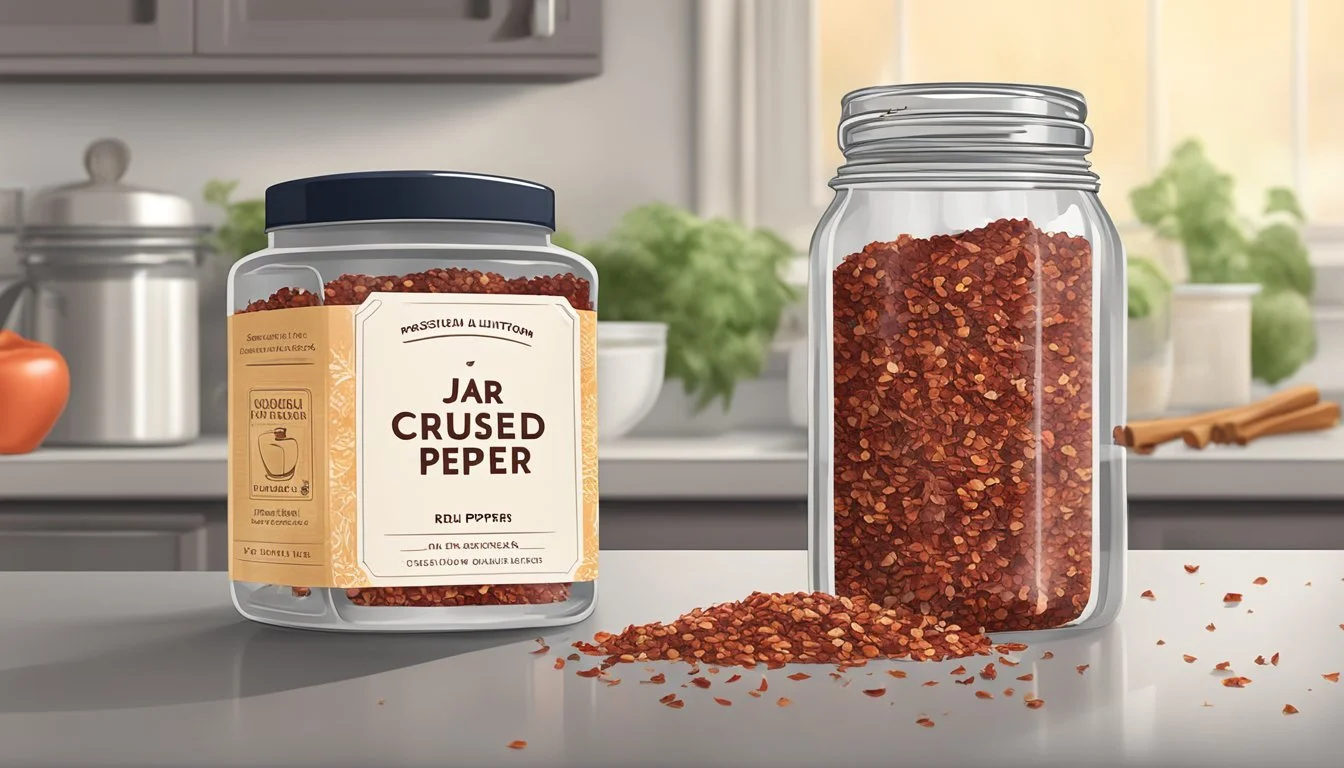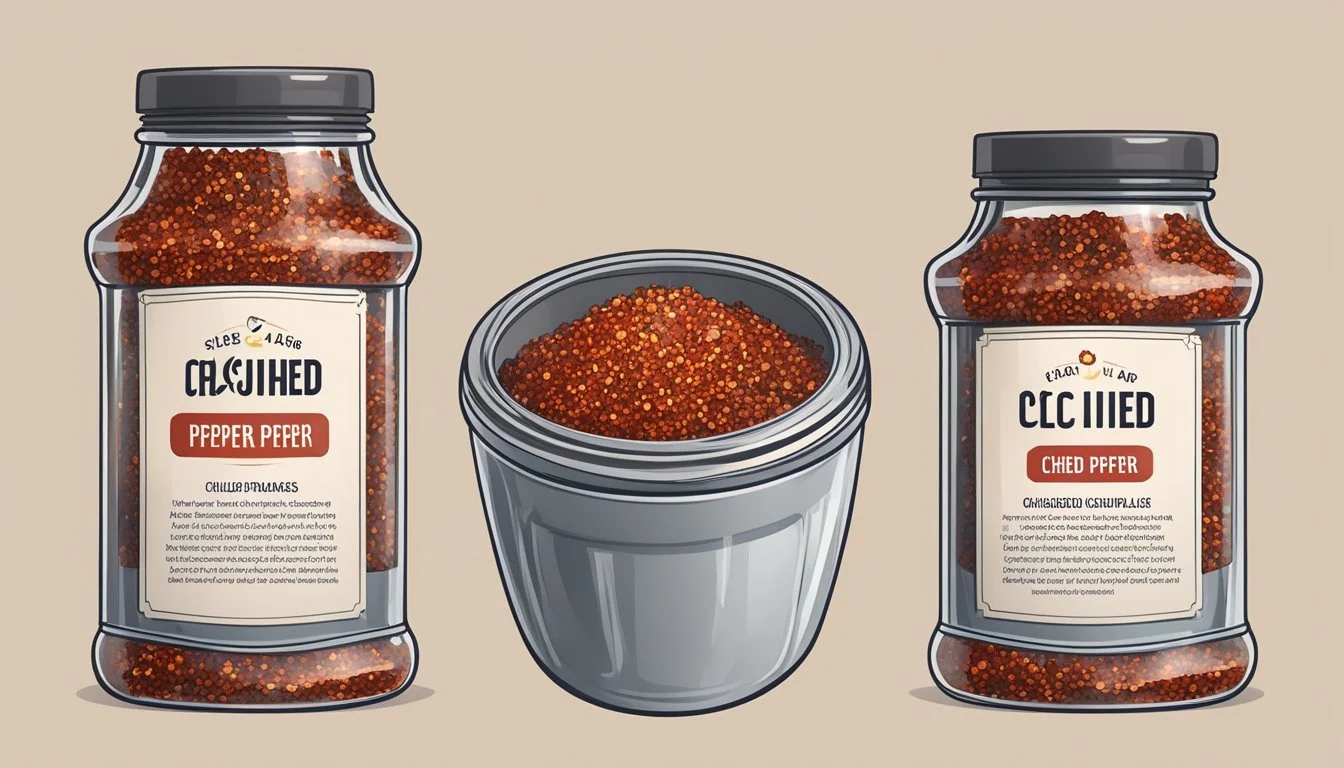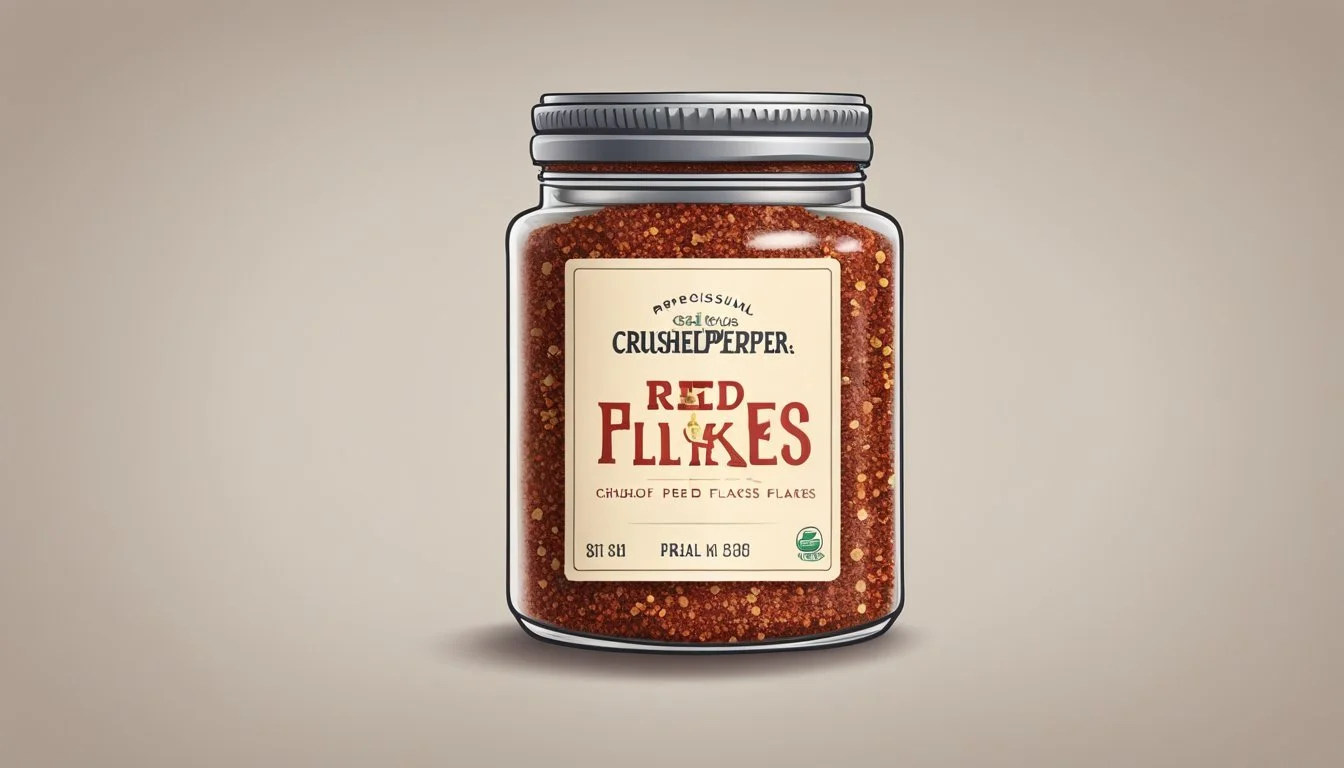Do Crushed Red Pepper Flakes Go Bad?
Shelf Life and Storage Tips
Crushed red pepper flakes are a popular spice used to add heat and flavor to various dishes. Many wonder if these fiery flakes can go bad. To provide clarity, crushed red pepper flakes do not technically spoil but can lose their potency and flavor after about a year.
Proper storage is key to maintaining the vibrant color and spicy kick of these flakes. Exposure to moisture can degrade their quality by encouraging mold and bacterial growth. Keeping them in a dry, cool place will extend their shelf life and ensure they remain a staple in your kitchen.
Crushed red pepper flakes are versatile, offering a moderate to high level of spiciness. Whether you're spicing up a pasta dish or giving a pizza some extra heat, using fresh, properly stored flakes will always deliver the best culinary experience.
Understanding Crushed Red Pepper Flakes
Crushed red pepper flakes, often derived from dried and ground red peppers, are popular for their distinct heat and flavor. They are a versatile ingredient adding spiciness to a variety of dishes.
Composition and Types
Crushed red pepper flakes typically come from dried red chili peppers, most commonly cayenne pepper. The production involves drying the peppers and then crushing them into small, coarse pieces with seeds included, which contribute significantly to their heat.
Different types of red chili peppers can be used, resulting in variations in spiciness and flavor.
Commercially available pepper flakes may sometimes blend multiple pepper types. Homemade versions allow control over the level of spiciness and texture. Those interested in specific heat levels can select peppers based on their Scoville rating, such as cayenne for a medium-hot flavor or habanero for a more intense heat.
Culinary Uses in Dishes
Crushed red pepper flakes are a staple in many recipes, providing a quick and easy way to add spiciness to dishes.
They are commonly sprinkled on pizza and pasta, giving a fiery kick that complements the savory flavors. These flakes also enhance soups, stews, and sauces, adding depth without overwhelming the dish.
In addition to Italian cuisine, they are used in Asian recipes, such as stir-fries and marinades, bringing heat that balances sweet or salty notes. Crushed red pepper can be integrated into seasoning rubs for meats or sprinkled over vegetables for a burst of flavor potency.
By experimenting with crushed red pepper in various dishes, cooks can achieve a desired level of heat and complexity in their culinary creations.
Factors Affecting Freshness and Potency
The freshness and potency of crushed red pepper flakes rely on several environmental factors, including moisture, temperature, light exposure, and air circulation. Understanding these factors ensures the maximum flavor and heat level of the spice.
Moisture and Humidity
Moisture is a primary enemy of crushed red pepper flakes. Exposure to humidity can cause the flakes to clump together and lose their crisp texture. This not only affects the spice's appearance but also its potency and aroma.
Storing red pepper flakes in tightly sealed airtight containers helps prevent moisture ingress. Avoid using plastic containers that may not be entirely moisture-proof. Instead, opt for glass jars with secure lids to maintain a dry storage environment. Additionally, keeping the storage area away from high-humidity zones like sinks or stoves extends the spice's shelf life.
Temperature and Sunlight
Temperature and sunlight significantly impact the quality of crushed red pepper flakes. High temperatures can accelerate the breakdown of the spice’s essential oils, reducing its heat level and fresh aroma. Similarly, direct sunlight can degrade the color and potency of the flakes over time.
To mitigate these effects, store red pepper flakes in a cool, dark place. A pantry or cupboard away from heat sources such as ovens and stovetops is ideal. Ensure the storage area maintains a consistent temperature to preserve the spice's freshness for a longer duration.
Exposure to Air
Air exposure is another critical factor affecting the freshness and potency of crushed red pepper flakes. When exposed to air, the essential oils within the flakes can oxidize, leading to a diminished taste and aroma. This oxidation process can also cause the flakes to become stale.
For optimal storage, use airtight containers that limit air exposure. Properly label and date the containers to keep track of their freshness. Avoid leaving the lid open for extended periods, and ensure it is sealed tightly after each use to maintain the spice's peak condition.
By managing moisture, temperature, and air exposure, crushed red pepper flakes retain their vibrant color, intense flavor, and desirable heat level for an extended period.
Proper Storage Methods
Storing crushed red pepper flakes correctly is essential to maintaining their quality and extending their shelf life. Moisture and exposure to air are primary factors that can spoil these spices.
Airtight Containers and Pantry
Storing crushed red pepper flakes in airtight containers is crucial. Mason jars, sealed plastic bags, and specialized spice jars with tight seals help keep moisture and air out.
Place these containers in a cool, dark pantry or cupboard. Avoid storing them near heat sources like stoves or direct sunlight as these can degrade the pepper’s texture and flavor. Properly stored, crushed red pepper flakes can last up to 3 years in the pantry.
Refrigeration and Freezing Options
For long-term storage, consider refrigeration or freezing. Store crushed red pepper flakes in airtight containers or vacuum-sealed bags before placing them in the refrigerator or freezer.
Refrigeration helps maintain the spice's freshness for up to 2 years. Freezing is suitable for very extended storage, especially in bulk quantities, preserving them for several years without losing flavor.
When needed, take out small amounts to avoid exposing the whole batch to room temperature, which can introduce moisture and reduce shelf life.
Identifying Spoilage and Use-By
To identify if crushed red pepper flakes have gone bad, there are several key indicators to consider, including visual, textural, scent, and flavor changes. Each of these factors can help determine the shelf life and quality of the red pepper flakes.
Visual and Textural Clues
Color: Fresh crushed red pepper flakes typically boast a vibrant red hue. Over time, the color can fade, indicating a loss in flavor and potency.
Clumping: When exposed to moisture, red pepper flakes can clump together. This change in texture is a sign that they may be spoiled.
Mold: The presence of mold on the flakes is a definitive sign of spoilage. Mold often appears as dark spots or fuzzy growth on the surface of the flakes.
Seeds: Check the seeds within the flakes. Fresh seeds are usually light-colored, while discolored or darkened seeds can indicate spoilage.
Scent and Flavor Changes
Scent: Fresh crushed red pepper flakes have a strong, pungent aroma. A noticeable change or loss of this scent can indicate that the flakes have lost their freshness.
Flavor: Loss of heat and flavor is a common sign of spoilage. If the red pepper flakes no longer add the expected spiciness to dishes, they have likely expired.
Staleness: A stale aroma or taste suggests that the flakes have been stored for too long and are past their prime. While not harmful, stale flakes won’t enhance dishes effectively.
While proper storage can extend the shelf life of crushed red pepper flakes, paying attention to these spoilage signs is crucial for maintaining their quality and ensuring the best flavor in your culinary creations.
Health Benefits and Considerations
Crushed red pepper flakes not only enhance your meals with a spicy kick but also offer several noteworthy health benefits. It's crucial to be aware of both the positive impacts and potential allergy or sensitivity warnings associated with their consumption.
Nutritional Profile and Benefits
Crushed red pepper flakes are a low-calorie addition to any diet and are packed with nutrients such as vitamins A, C, and B6. They are rich in minerals like potassium and manganese. Capsaicin, the compound responsible for their spicy flavor, may aid in metabolism boosting, pain relief, and improved digestion.
Adding crushed red pepper flakes to your food may even enhance nutrient absorption, particularly from plant-based sources. Capsaicin has antioxidative properties, which support the immune system and can improve energy and athletic performance.
Allergy and Sensitivity Warnings
While crushed red pepper flakes offer many benefits, some individuals may experience allergies or sensitivities. Symptoms could include gastrointestinal discomfort or skin reactions. People with a known intolerance to nightshade plants should avoid these flakes.
For those with celiac disease or gluten sensitivities, crushed red pepper flakes are naturally gluten-free, offering a safe spicy option. However, it's essential to check for potential cross-contamination during processing. Always consult with a healthcare provider if any allergic reactions occur.
Integrating Into Recipes
Crushed red pepper flakes are a versatile spice that can enhance a variety of dishes. They add both heat and flavor, making them perfect for a wide array of recipes, from pizzas to marinades.
Getting the Desired Heat and Flavor
Crushed red pepper flakes are a popular choice for adding a spicy kick to dishes. The amount used can significantly influence the heat level. For instance, adding a small pinch can provide a mild warmth, while a tablespoon can create intense heat.
These flakes are particularly effective in dishes where a gradual heat is desired. They can be sprinkled on pizzas, incorporated into pasta sauces, or added to soups and stews. For marinades, crushed red pepper can penetrate the meat, infusing it with a deep, spicy flavor. They also work well in sweet and spicy desserts, like chocolate with a hint of chili.
Tip: Start with a small amount and gradually increase to avoid overpowering the dish.
Making Homemade Crushed Red Pepper
Creating homemade crushed red pepper is straightforward. Garden-grown cayenne peppers or jalapeños can be used for this purpose. Once harvested, they should be dried thoroughly. This can be done using a food dehydrator or by air-drying in a well-ventilated area.
After drying, the peppers can be ground using a food processor. The consistency can be adjusted based on preference, from coarse flakes to finer powder. Storing these homemade flakes in an airtight container will maintain their flavor for an extended period.
Ingredients: Fresh cayenne peppers or jalapeños, food processor.
Instructions:
Dry the peppers completely.
Grind in a food processor to the desired consistency.
Store in an airtight container, away from moisture and light.
Homemade crushed red pepper allows control over the heat level and can be a rewarding addition to the cooking process.
Maintaining Quality Over Time
Proper storage techniques and regular rotation are essential for maintaining the quality of crushed red pepper flakes. This ensures they remain flavorful, potent, and safe to use in your culinary creations.
Rotating Your Spice Collection
To keep your spice cabinet stocked with the freshest crushed red pepper flakes, practice regular rotation. Make it a habit to place new spices at the back and move older ones to the front.
Use a labeling system with dates to track when each spice was purchased. Regularly check the shelf life of your dried herbs and ground spices. Crushed red pepper typically retains its quality for 1 to 3 years when stored correctly.
To ensure you are using the freshest spices, periodically inspect your collection and discard any spices that have lost their potency or aroma.
Preventing Infestation and Degradation
Proper storage is crucial to prevent infestation and degradation of crushed red pepper flakes. Store them in airtight containers, preferably glass jars with tight seals, to keep out moisture and air.
Place the containers in a cool, dry place away from direct sunlight to avoid exposure to heat and humidity, which can promote mold growth and degradation.
Insects can be a common problem in spice cabinets. Keep an eye out for signs of insect activity and immediately discard any infested spices. Storing spices in the freezer is an effective method to prolong their shelf life and maintain their potency over time.









